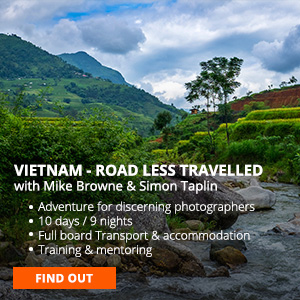How To Pre-Visualise Photos PT.1
Pre-visualising photos or previz as it’s known, is vital if you want to get away from spraying and praying for a ‘good one’. But this is a struggle for many photographers so I thought we’d go to a location and I’ll talk you through my thoughts about what images will work, what won’t and when they should be taken.
Pre-visualizing is about your creative imagination. You have to imagine what the photo will look like in different circumstances and if shot from different positions. How it’ll look with different focal lengths using different apertures for different amounts of depth of field or sharpness. Then where to place that sharpness within your image.
“But how do I do it?” I hear you cry.
Remember when you were a kid? I bet you used to imagine all kinds of things and they were vividly real inside your mind. I’ve always been excited by big machines like farm tractors, trucks and earth moving equipment. When I was little I had an old pram I’d turn onto it's side, grab a kitchen stool and sit for hours on end grasping one of the wheels imagining I was ploughing a field, driving a tipper truck.
In my head I was visualising the field being filled with furrows as I ploughed it. When it was a truck, I’d imagine each bump in the road, the bends and how much to turn the ‘steering wheel’ to get round them. To me it was vivid and real.
What did you imagine when you were a kid that felt completely real? Whatever it was, go back to it now and remember the associated feelings. What could you see in your minds eye when you were doing it?
OK you think I’m nuts! But I mean it. As we grow into adulthood we forget how as children we could see everything in our imagination. We dismiss it as childish because we’ve grown up. But that childlike imagination is the driving force behind everything creative so get stuck in reviving it. Now you’re an adult you can control and harness this incredibly powerful creative tool.
Think about a place you love to visit and go there in your mind. Imagine how it looks as you walk around it. How it changes when seen from different angles, on a wet day, in sunshine, in the morning, at night, with people about, when it’s deserted... This is visualising.
Now all you have to do is look at a whatever you want to photograph and imagine it as a picture. If it’s sunny and there are shadows, imagine how it’d look if the shadows went the other way. Imagine it seen through a wide angle lens, a long lens, from above, below, from just 6 inches to the side. How would it look if you had more sky, or less sky?
Imagine how it’d look with lots of depth of field front to back sharpness. Then how it’d look with a very shallow depth of field picking out just one part of the image. Imagine these things, see them clearly in your mind’s eye. This is pre-visualising your photos.
Obviously you cannot pre-visualise photos if you don’t know how your camera controls and lenses affect the way an image looks. You must know how to control your camera and make it capture these things they way you want them captured. These are the techniques of photography.
You can’t pre-visualise if you don’t understand how to recognise qualities of light and how to use them appropriately. How to compose a photo and the relationship between focal length and composition. If this is you, enroll on my Beginners Course, complete the lessons and practise them thoroughly.
Then it’s time to learn the thought process the techniques together in the correct sequence to create the image you want to take. And that sequence may change depending on each image. That’s why learning to think like a photographer is vital to fulfilling your photographic potential. So stop messing about doing the same thing you’ve done for years, whilst hoping for a different result - and get onto the 7 Building Blocks of Photography.
Sorry there’s no quick fix. If you want to get photographically fit you gotta work at it. And that includes revitalising that childhood imagination so you can pre-visualise how different lenses, focal lengths, apertures, shutter speeds, distance to subject, where to stand and when to click will impact on your images…
Best wishes…












































